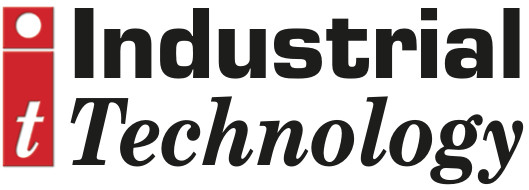
Posted to News on 11th Sep 2024, 10:00
Powering the future of farming
With challenges to traditional agricultural approaches continuing, including a reduced workforce, the sector will increasingly rely on robotics and automation. This shift is raising the dependence on motion systems, based around DC motor technology, to power these new agricultural systems. maxon's Martin Leahy explains.

(See maxon at MachineBuilding.Live, 2 October 2024, on stand 34)
Agriculture is the essential first step in food production, yet the industry faces continued pressure to increase productivity, efficiency, and meet the challenges of evolving government policy. To respond to these demands, Agriculture 4.0 represents the integration of modern technologies, where robotics and automated techniques, managed and monitored via cloud computing with real-time data, is starting to emerge.
Central to these technology advances, and a fundamental cog in Agriculture 4.0, is the DC motor, crucial to enable the precise motion required for this new agricultural technology. DC motors also achieve the most efficient form of rotary motion, important for the growing potential of battery-powered devices, and they enable easy integration with IoT technologies, allowing for real-time adjustments and data-driven decision making. Vital for real-world use in agricultural environments, the robust design of DC motors also ensures low maintenance.
Motion in Agri 4.0 applications
The Autonomous Mobile Robot (AMR), or agribot, is a prime example of the advantages of Agriculture 4.0 technology. As agribots become increasingly deployed and economically feasible compared to traditional farming methods, they offer the potential to transform farming. Agribots are gaining traction in the market due to drivers such as the high cost of herbicides and labour, as well as increased scrutiny on environmental practices. These robots are designed to perform tasks including mechanical weeding, fruit picking, precision seeding, and even manure scraping and feeding in the livestock sector.
Though many AMRs integrate sophisticated opti/geo guidance systems, they must still be safe and easy to operate. Agribots rely on DC motors for driving their wheels as well as manipulating tools or equipment. These motors and their controls need to provide precision, and as they are required to operate seasonally in dynamic environmental conditions, they've got to be highly durable.
Meanwhile, advances in Unmanned Aerial Vehicles (UAVs) have led to the growth in the agri-drone sector for tasks such as spraying, seeding, mapping, and inspecting crops and livestock. The advantage is a reduction in costs and lower water consumption with targeted and precise application of sprays and fertilisers based on real-time data. This also has environmental benefits by minimising chemical and water usage through selective spraying techniques. While drones are not constrained by difficult terrain, they don't cause soil compaction either.
DC motors provide the drone with propulsion through the propellers as well as powering auxiliary equipment such as pumps for spraying, or gimbles for cameras. This means that safety and reliability, along with energy efficiency, are key factors in motor choice for drone design.
Another developing sector enabled by the advantages of Agri 4.0 is vertical farming. Though this approach is currently confined to high value cropping systems such as leafy greens, herbs, strawberries, and tomatoes, it offers year-round production regardless of weather. It can also be set up in urban areas, minimising the distance from farm to fork. Here, adjustable lighting and ventilation systems are required to ensure the optimal climate. Across these applications, DC motors are typically required to drive ventilation and climate control systems, as well as smart irrigation, delta planting, and to power robots involved in harvesting.
The demand on motion systems
The requirements of these applications are placing new demands on the motion systems responsible for powering and controlling them. To optimise the kind of robotic coordination necessary for a gripper to pick a strawberry without damaging it, the motion system must have highly precise control. From a motor standpoint, fruit-picking robots often share some interesting similarities with prosthetics, despite their apparent differences. Both systems require high dexterity and precision using sensors and feedback systems.
For applications like these, coreless DC motor technology is increasingly relied on instead of traditional motor designs with iron rotors. A coreless design provides very low cogging, that is the jerky motion otherwise caused by the magnetic interaction between an iron rotor and stator. Instead, a coreless motor gives smooth control, supporting precision and careful product management.
Out in the field, robots are increasingly used in swarms of more compact, lightweight designs rather than fewer numbers of very large machines, as this approach increases efficiency and redundancy over downtime. Taking drones, for example, motion systems need to offer a high torque-to-mass ratio, which reduces the size of motor required, instead enabling the robot to carry a greater payload. As a result, compact and power-dense DC motors, which are also smaller and lighter than their AC counterparts, will have a key role to play. Technology like coreless designs, that also reduce weight, will again be relied on.
Energy efficiency is also crucial to reduce demand on batteries, so brushless DC (BLDC) motor technology will also be important. This motor design, such as maxon's EC motor range, uses electronic commutation, which minimises energy losses compared to brushed DC motors.
To ensure real world use, robots will also have to endure tough conditions. Robots might need to operate at all times of the year, in various weather conditions, and in different locations worldwide. As a result, motion systems must ensure repeatable performance and long-term durability, vital to prevent downtime.
Automation in the real world of agriculture
Right now, introducing robots in farming is still relatively limited. A combination of high capital costs and inexperience has also led to farmers considering the Robotics-as-a-Service business model. The concept involves an operating and service contract with the machine manufacturer instead of purchasing the whole system outright. Where the work is seasonal and often provides just a short window of time, Robotics-as-a-Service minimises the challenges and costs of downtime in the middle of a harvest, as the manufacturer can provide a replacement or rapid service for most stoppages.
While the use of robotics in agricultural food production isn't common to every farm across the UK and Europe, the advantages it could provide in productivity and efficiency mean that we can continue to expect its introduction to a more diverse range of farms over the next two to five years. This is especially true given the reduced agricultural labour force. As this happens, the reliance on DC motor technology will become increasingly important.






